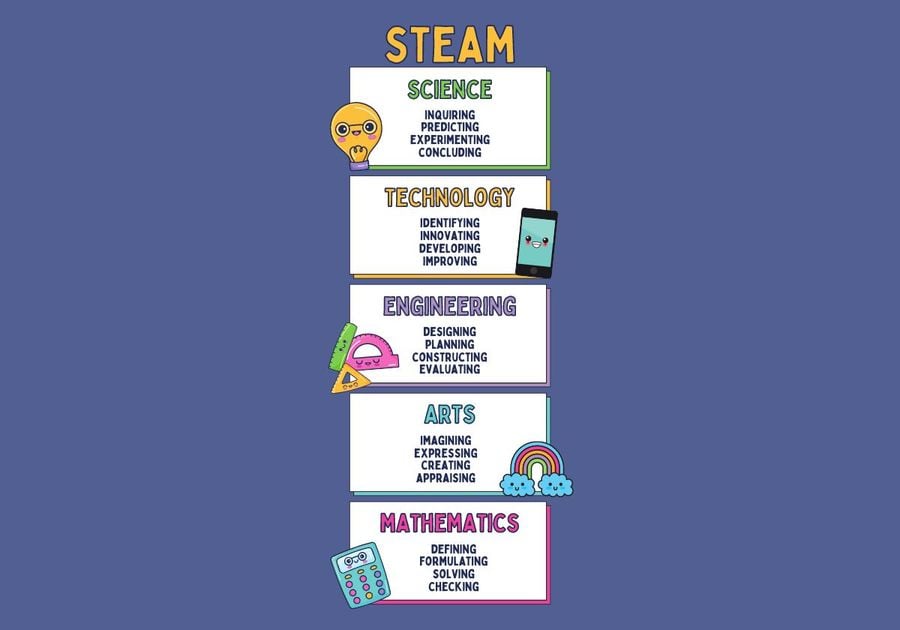I couldn't help but overhear a conversation between two, I will say, mature patrons talking about STEAM and what it was. "Back in their day, schooling was just schooling." "It didn't have all these fancy names and terms." I kind of chuckled to myself and thought, Well, maybe not everyone understands what STEAM education is. SO.... here we go!
STEAM stands for Science, Technology, Engineering, Arts, and Mathematics. It is an educational approach that incorporates these five disciplines into an integrated curriculum. STEAM education seeks to combine the analytical and critical thinking skills of science, technology, engineering, and mathematics with the creativity and problem-solving capabilities of the arts.
The STEAM approach aims to bridge the gap between traditionally distinct subjects, promoting interdisciplinary learning and encouraging students to approach problems from multiple angles. It emphasizes hands-on learning, collaboration, and real-world applications, preparing students for the challenges they may face in a rapidly evolving and interconnected world.
The individual components of STEAM are defined as follows:
- Science: This includes the study of the natural world, scientific principles, and the scientific method. It involves disciplines like physics, chemistry, biology, earth sciences, and more.
- Technology: This refers to the use of tools, machines, and techniques to solve problems and accomplish tasks. In modern contexts, technology often relates to computer science, information technology, and digital tools.
- Engineering: Engineering involves the application of scientific and mathematical principles to design and create solutions to practical problems. It encompasses various fields such as civil, mechanical, electrical, and software engineering.
- Arts: The arts encompass a wide range of creative disciplines, including visual arts, performing arts, literature, music, and design. Integrating arts into STEAM education fosters creativity, imagination, and artistic expression.
- Mathematics: Mathematics is the language of science and technology, providing a structured way to express and analyze quantitative relationships. It is essential for problem-solving, modeling, and understanding various phenomena.
STEAM education aims to equip students with a well-rounded skill set that is relevant to diverse career paths and fosters innovation, critical thinking, and adaptability in an ever-changing world. It encourages students to see the interconnectedness of different disciplines and how they can work together to solve complex problems.






